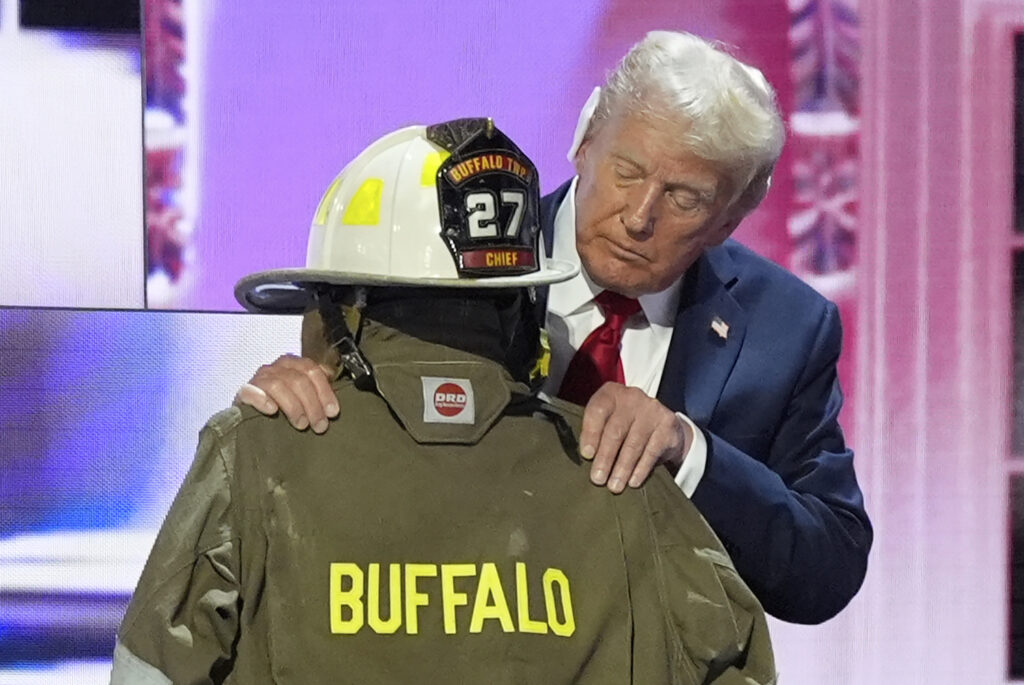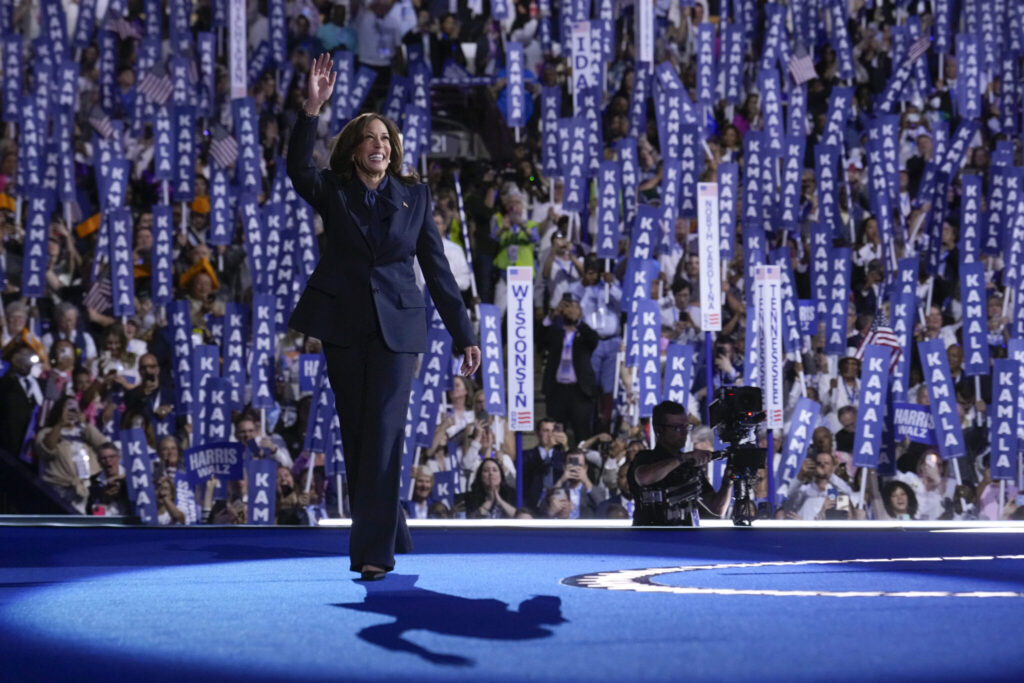In a close election campaign with both sides looking for an edge, the party with more people watching their midsummer convention would seem to have an important sign of success. Yet historically speaking, that measurement means next to nothing. Eight times over the past 16 presidential election cycles dating back to 1960, the party with the most popular convention among television viewers won in November. Eight times they lost. The Democrats will see what a summer advantage means this November. Vice President Kamala Harris’ party averaged 22 million viewers for its convention this week, compared to the Republican average of 19.1 million in July, the Nielsen company said on Friday.
Quick Read
- Despite the notion that higher TV viewership for a political convention might signal election success, historical data shows that it doesn’t necessarily translate to victory, as the party with the most viewers has won and lost an equal number of times.
- In 2024, the Democratic convention outpaced the Republican convention in viewership, averaging 22 million viewers compared to the GOP’s 19.1 million, but this doesn’t guarantee electoral success.
- Historically, the party with the most popular convention has only won eight out of the last 16 presidential elections since 1960, showing that convention viewership is not a reliable predictor of election outcomes.
- Viewership patterns often reflect party loyalty, with most people watching their own party’s convention, and networks like Fox News and MSNBC drawing viewers aligned with their political leanings.
- The entertainment value of conventions can also influence viewership, but it doesn’t necessarily impact the election results, as seen in past cycles.
The Associated Press has the story:
Are convention viewing numbers a hint about who will win the election?
Newslooks- NEW YORK (AP) —
In a close election campaign with both sides looking for an edge, the party with more people watching their midsummer convention would seem to have an important sign of success. Yet historically speaking, that measurement means next to nothing. Eight times over the past 16 presidential election cycles dating back to 1960, the party with the most popular convention among television viewers won in November. Eight times they lost.

The Democrats will see what a summer advantage means this November. Vice President Kamala Harris’ party averaged 22 million viewers for its convention this week, compared to the Republican average of 19.1 million in July, the Nielsen company said on Friday.
“It’s one of those interesting things about covering politics is that you see these indicators about what really matters, and a lot of times it doesn’t,” said veteran journalist Jeff Greenfield, who covered the Democrats this week for Politico.
Popularity contests in TV ratings don’t necessarily translate
This week’s numbers mean the Democrats have been more popular with viewers in 13 of the past 17 presidential election year summers, Nielsen said. Although Democrats have won eight of the first 16 elections, their candidate recorded the most votes in 10 of them.
The last time a party lost despite having a more popular convention was in 2016, although it was close: Democrat Hillary Clinton’s nominating session beat Donald Trump by less than a million viewers per average, Nielsen said. For all of his vaunted popularity as a television attraction, Trump fell short in the convention ratings three straight times.
A convention’s last night, with the nominee’s acceptance speech, generally gets the most viewers. Trump reached 25.4 million people with his July speech, less than a week after an assassination attempt, and the average would have undoubtedly been higher if his 92-minute address hadn’t stretched past midnight on the East Coast. Harris’ shorter speech reached 26.2 million. Despite Barack Obama’s historic election as the nation’s first Black president in 2008, Republican John McCain’s convention actually had more than 4 million viewers each night on average.
People probably are watching their own party’s convention
For four straight cycles, between 1976 through 1988, the party with the most-watched convention lost the election. That included the two lopsided victories by Republican Ronald Reagan — although a nomination fight between Jimmy Carter and Ted Kennedy in 1980 and the selection of Geraldine Ferraro in 1984 as the first woman on a national ticket probably boosted the Democrats’ convention audience in those years.
Typically, people are more likely to watch their own party’s convention, Greenfield said. That’s reflected in the ratings this year: Fox News Channel, which appeals to Republicans, had by far more viewers than any other network for the GOP convention, while left-leaning MSNBC has dominated this past week.
It will also be interesting to see if star power — or potential star power — boosted Harris. Rumors of a surprise Beyoncé or Taylor Swift appearance, ultimately unfounded, hung over the Democratic session.
Both conventions are highly produced television events as much as they are political meetings, and Greenfield said it was clear the Democrats had the upper hand. “I think if you were going strictly on entertainment value,” he said, “Oprah Winfrey and Stevie Wonder trump Kid Rock and Hulk Hogan.”







